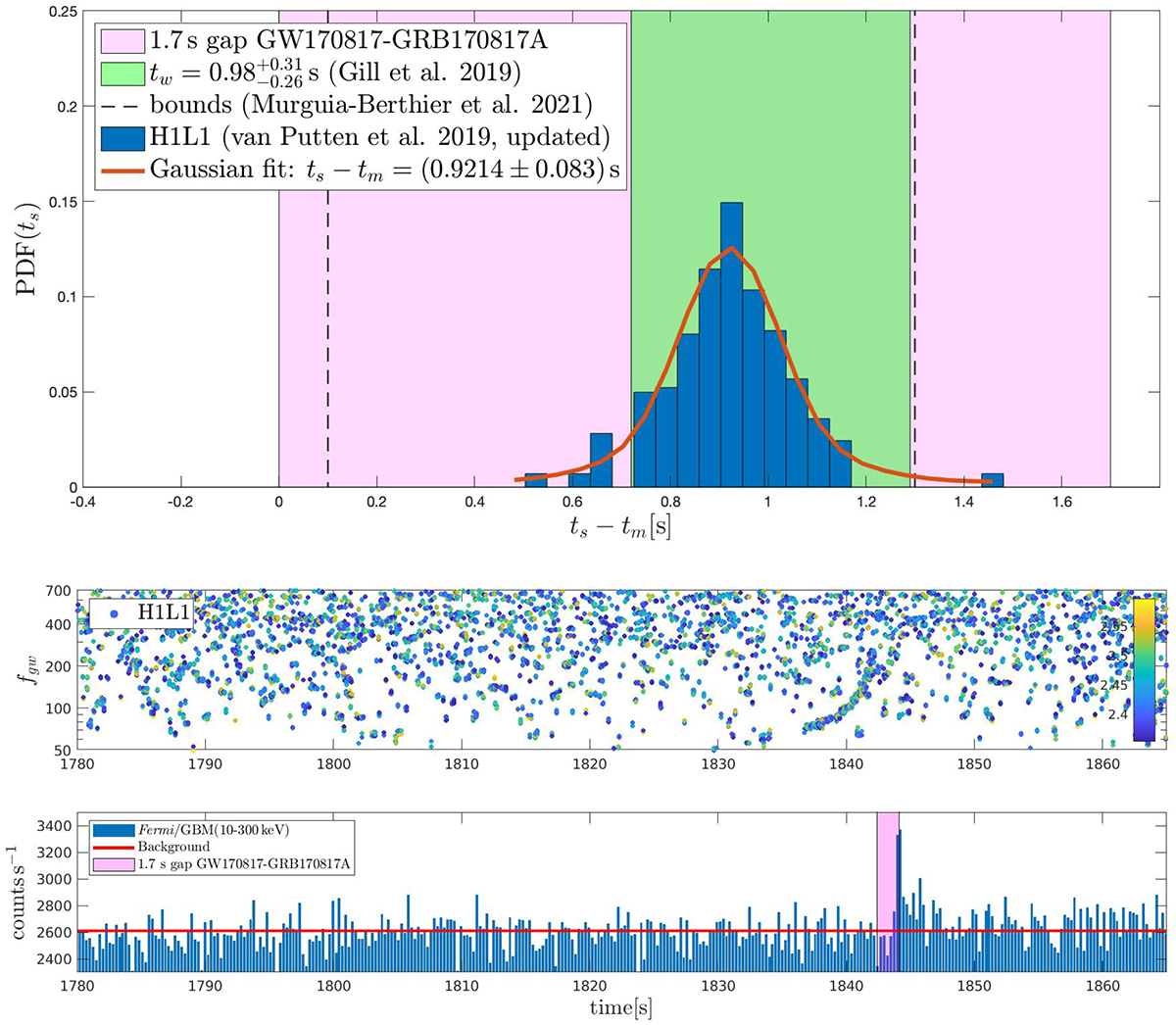Fig. 3.

Download original image
PDF of the start time ts (blue) of post-merger gravitational radiation to GW170817 following rejuvenation in gravitational collapse to a rotating black hole, setting the initial data to GRB170817A (top-left panel). The PDF shown (bin size 0.05 s) is superposed to estimates of the lifetime of the progenitor hypermassive neutron star formed in the immediate aftermath of the merger (reviewed in Murguia-Berthier et al. 2021). Highlighted is the 1.7 s gap (magenta) between merger time tm = 1842.43 s and the onset of GRB170817A. Post-merger emission to GW170817 appears as a descending chirp in the (H1,L1)-spectrogram merged by frequency coincidences |fH1 − fL1| < 10 Hz (lower panels). For the merged spectrogram, parameter estimation (Fig. 4) derives from time-slides less than the duration τ of the templates (11) against a background generated by larger time-slides. Post-merger gravitational radiation is identified with the formation of the central engine of GRB170817A, whose duration is constrained by the lifetime of black hole spin (bottom panel).
Current usage metrics show cumulative count of Article Views (full-text article views including HTML views, PDF and ePub downloads, according to the available data) and Abstracts Views on Vision4Press platform.
Data correspond to usage on the plateform after 2015. The current usage metrics is available 48-96 hours after online publication and is updated daily on week days.
Initial download of the metrics may take a while.


